
| (one synonym : Panacra salomonis Clark, 1920) MACROGLOSSINAE, SPHINGIDAE, BOMBYCOIDEA | (donherbisonevans@yahoo.com) and Stella Crossley |
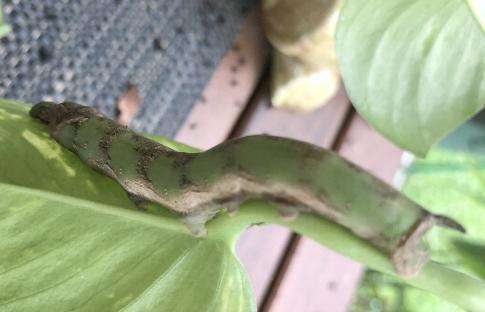
(Photo: courtesy of Sandra Cathcart, Kuluin, Queensland)

| (one synonym : Panacra salomonis Clark, 1920) MACROGLOSSINAE, SPHINGIDAE, BOMBYCOIDEA | (donherbisonevans@yahoo.com) and Stella Crossley |

(Photo: courtesy of Sandra Cathcart, Kuluin, Queensland)
The young Caterpillars of this species are green, and develop fawn markings. The last instar can become fawn with wavy markings and green patches. The caterpillars have an enlarged flap of skin on the thorax. The last abdominal segment is abruptly flat, and carries a strong green and grey backward curving horn that ends in an abrupt point, but is quite harmless.
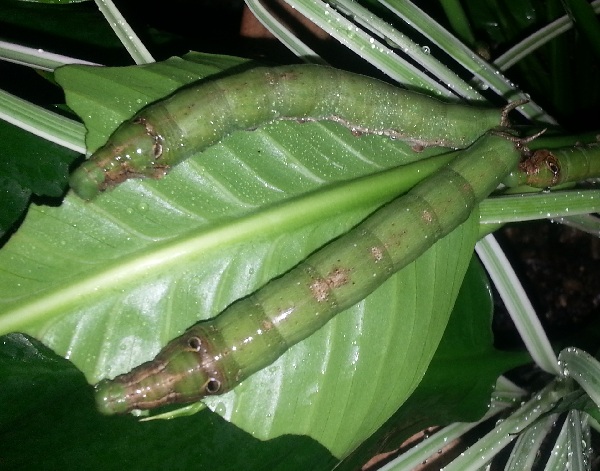
When the caterpillar is disturbed, the flap of skin on the thorax is stretched out revealing a pair of eyespots on the first abdominal segment. Often, a white line runs from the head to each eyespot.
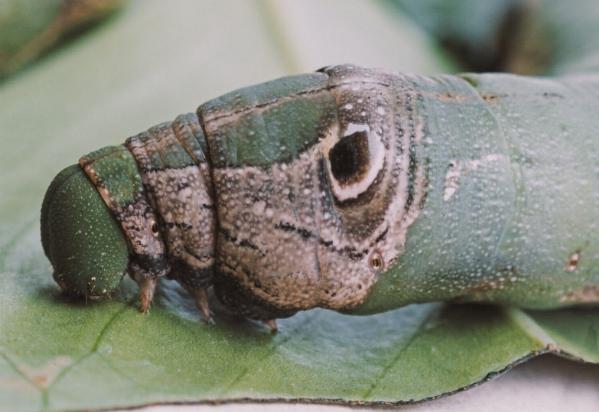
The caterpillars have been found feeding on plants in ARACEAE, including :
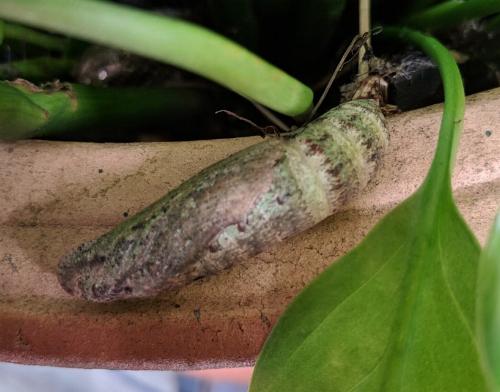
The caterpillars can grow to a length of about 9 cms. The pupa is mottled grey, and formed amongst the roots of its foodplant, in a messy flimsy cocoon. The pupa is mottled brown and green.. The pupa has a length of about 5 cms.
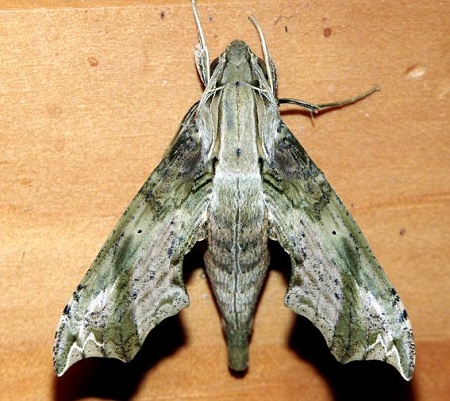
The adult moths have patchy greenish or purplish brown forewings each with squiggly dark lines, and sometimes an angular white patch and two white chevrons by the wingtip. The forewing margins consist of two concave curves meeting at a cusp about halfway along. The hindwings are dark brown, crossed by a broad orange band. The moths have a wingspan of about 7 cms.
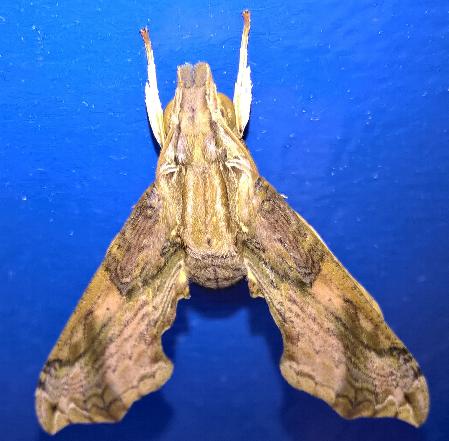
In its resting posture: the moth curves its abdomen under its body. Then one may suspect it is the face of a fearsome monster, with the knobs each side of the thorax as eyes, the thorax as the nose, and the lateral bands on the abdomen as a mouth with teeth. Maybe this deters predators, or maybe only amuses imaginative humans.
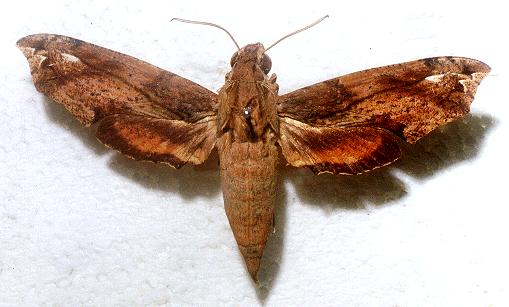
The eggs are off-white and spherical with a diameter of about 2 mms.
The species is found in the south-west Pacific, including
as well as in Australia in

The eggs are off-white and spherical with a diameter of about 2 mms. They are laid singly on leaves of a foodplant.
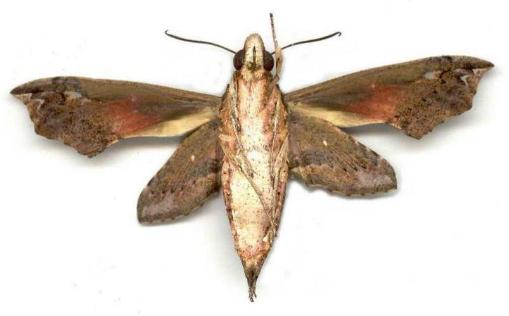
Further reading :
Ian F.B. Common,
Moths of Australia,
Melbourne University Press, 1990, pl. 16.13, p. 413.
Maxwell S. Moulds, James P. Tuttle and David A. Lane.
Hawkmoths of Australia,
Monographs on Australian Lepidoptera Series, Volume 13 (2020),
pp. 118-121, Plates 24, 77, 86.
Buck Richardson,
Tropical Queensland Wildlife from Dusk to Dawn Science and Art,
LeapFrogOz, Kuranda, 2015, p. 197.
Lionel Walter Rothschild,
Notes on Sphingidae, with descriptions of new species,
Novitates Zoologicae,
Volume 1, Number 1 (1894), p. 82, and also
Plate 5, fig. 15.
 caterpillar |  butterflies |  Lepidoptera |  moths |  caterpillar |
(updated 22 April 2013, 15 October 2024)